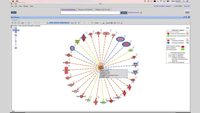QIAGEN IPA
Uncover molecular drivers of the tumor microenvironment using curated data and predictive modeling
135 views
Understanding the tumor microenvironment (TME) presents a major challenge for biopharma researchers and translational scientists. The complexity of cellular interactions, variability across patient samples, and overwhelming volume of public omics data can make it difficult to pinpoint key molecular drivers and predict functional consequences. Building a clear, actionable view of the TME often feels like assembling a puzzle without the picture on the box.
In this webinar, discover how QIAGEN Ingenuity Pathway Analysis (IPA) can help overcome these challenges by combining expertly curated biological knowledge with powerful predictive modeling tools. Learn how to easily construct molecular networks, interpret gene expression data from resources like TCGA and GEO, and model upstream regulators to predict immune and tumor behavior. Using examples such as IL1B’s role in non-small cell lung cancer (NSCLC), we’ll show you how IPA can accelerate your discoveries and guide therapeutic insights.
What you’ll learn:
How to identify disease-associated molecules and visualize their biological interactions
How to mine and interpret public gene expression data for deeper insights into cancer biology
How to model upstream regulators and predict functional outcomes within the TME
Related videos
QIAGEN IPA
Analyze, compare and contextualize your biological data with QIAGEN IPA
Discover why QIAGEN Ingenuity Pathway Analysis (IPA) is more than just...
QIAGEN IPA
Interpreting your comparison analyses results in IPA
Learn how to view and interpret your comparison analyses results in IPA and...
QIAGEN IPA
New user training: QIAGEN Ingenuity Pathway Analysis (IPA)
New user training: Large dataset analysis and knowledge base queries using...
QIAGEN IPA
Interpreting the Results of Your Phosphoproteomics Analysis in IPA
Learn how to view and interpret your Phosphoproteomics Analysis results in...



